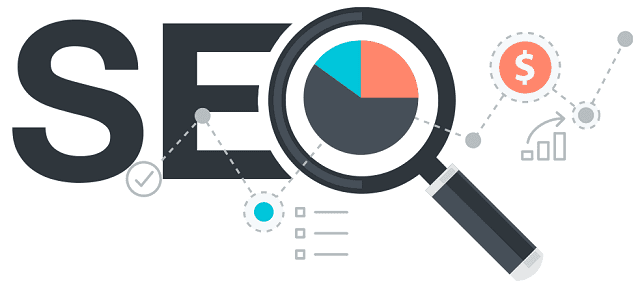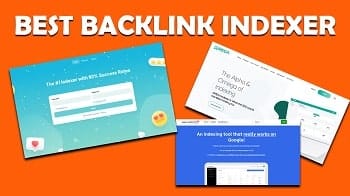In 2023, almost 52% of all traffic generated by auto parts websites was via organic searches.
Improving your rankings in search engine results pages is the best way to increase your chances of being found before your competitors.
Here are a few key SEO pointers for auto parts retailers.
Know the Journey
To optimize for organic search traffic, auto parts retailers need to first understand their customer journey.
The journey to purchase auto parts can vary, depending on the exact part.
For example, when a shopper needs an OEM part, it’s usually because something broke. It’s an unplanned purchase, often made from a mobile.
But, for a performance car part, accessories, or something to customize a vehicle, customers will often research for weeks or months.
When carrying out SEO for auto parts sales it’s important to understand your customer journey and know the keywords they will be searching at every stage.
Use Dynamic Tagging
Page titles help search engines to understand your site. Having correct page titles in place will help you rank a higher in relevant search results. Page titles also help potential customers to understand what results they are offered from a search.
META descriptions appear below the title tag in search results. They are for potential customers, and just give a fuller explanation of what they should expect if they click your link.
The best META description tags have the following features:
- Feature the target keyword(s)
- Make some sort of promise (e.g., fast shipping.)
- Mention your company’s unique selling propositions (e.g., huge inventory, great prices, etc.)
- They include a call to action like “order online today” or “order before 2 pm for next day delivery”
Both title and meta tags are relatively simple elements. However, when you’re faced with updating thousands of pages, it’s quite a task.
With dynamic tagging for your page titles and meta descriptions, you can automatically pull in the category/product names into the page title and meta description. T
hese auto-populated page titles and meta descriptions make it easier to optimize every category and product page on your site.
Optimize for part number
Every vehicle part has a part number. Some customers will know this number and use it to search for the part they want to replace.
Thus, SEO for auto part numbers is critical for anyone selling automotive parts online.
The part number should be included in titles and image alt tags along with the part name.
Optimize Images
Customers want to see that the part they are ordering looks like the one they are searching for. Often DIY buyers want to see every angle of a product to ensure it looks like the part they are replacing.
Large, high detail photos will increase the time customers spend on your product pages and reduce the bounce rate. This will positively affect your search engine ranking.
An extra detailed product gallery, maximize and zoom functions on product photos, videos in the image gallery, and even 360-degree rotating product images are all proven to increase time on page and conversion for auto parts sellers.
Image alt tags are also an important contributing factor for SEO. Be sure to include relevant alt tags for every image on your website.
Parts Compatibility
Allowing customers to search for auto parts by car year, make and model increases conversion to sale. In addition, including full part compatibility information in your website also gives lots of good information for search engines to help your ranking.
Detailed specifications also help because you have an opportunity to be featured in the snippets section of Google. These have higher visibility and click through rates.
Another benefit that comes from optimizing specifications is that if you broaden your chance of being seen on Google.
If a customer is looking for a product that you don’t stock, but which has the same specifications or compatibility as a product that you do have in stock, the customer could still buy from your website.
Therefore, as a part of your descriptions, you should include the car models the car is compatible with.
An e-commerce site with inbuilt fitment data software makes this huge amount of data easily manageable for sellers. Retailers can easily build lists of compatible vehicles that their parts fit, as they list them.
Building up huge tables of compatible vehicles is fast with accurate fitment data catalog software. Instead of selecting each individual vehicle make, model year and trim, you can select all trims with a click.
For example; for a 2013 BMW 3 Series there are 128 trim variations to choose from. Instead of 128 separate clicks, sellers only need to click once.
Parts fitment allows more buyers to find your listings through search. Fitment data also helps buyers to be sure that they are buying the correct part, reducing your returns rate and improving your feedback score.
Optimize for load speed
Load speed is a major ranking factor. It is a massive conversion factor too.
Google found that 40% of customers will abandon a website and not return after two seconds of waiting for a page to load. E-commerce website pages should always load in under two seconds to maximize conversion.
Because customers like fast sites, Google gives slow sites of poor quality scores. As a result, they rank lower and pay more for Google ads.
Improving the speed of your e-commerce site will help your site to rank well.
Create high quality content
Quality product descriptions and images are the basic content that auto parts sellers need. But auto parts is a competitive market. Basic content won’t be enough to get you to the top of search engine rankings.
Content like blog posts, how-to guides, videos, and infographics are all high-performing tools for improving search results that auto parts retailers should use.
Use your keyword research and industry knowledge to create content that answers customer questions.
Consider videos or written guides on how to fit parts or accessories, differences between brands of parts, or how to know when parts need changing.
Create content with the aim of helping your customers. If you do this, you will increase time on site, lower bounce rate, and naturally increase your search engine ranking.
Author bio:
Jessica McDonald is head of content marketing at Frooition, a branding and design agency focused on improving e-commerce.
Read More













Comments